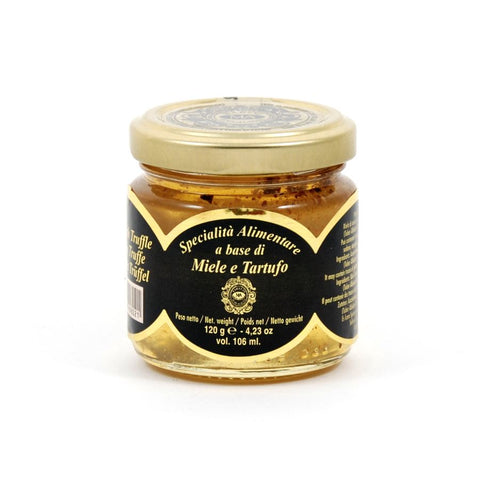The Buyer’s Guide to Honey
by Ellie Edwards

What is honey?
Honey is a sweet, viscous ingredient, made by bees. Honey bees collect nectar to store as a source of food and heating during the winter months. Bees produce more honey than they need, so beekeepers harvest the excess for humans to enjoy.
The process of making honey starts with the bees collecting the flower’s nectar. This nectar is broken down to simple sugars within the honeycomb. The honeycomb evaporates, leaving a sweet substance.
The texture and flavour of honey depends on the time of year the bees collect the nectar. Your honey can range from light and floral to dark amber and aromatic.
How to cook with honey?
Honey is a versatile storecupboard ingredients which you can spread over crumpets, drizzle over babka buns, use to glaze halloumi or serve with salty cheese. Explore our range of honey recipes here:
Belazu's Black Tahini and Honey Babka

Black tahini adds a striking colour and nutty sesame flavour that is balanced with the sweetness of honey, and hint of chocolate from the cocoa powder.
Baked Goat’s Cheese with Lavender and Honey

Thyme flower honey offers a floral sweetness to balance the tangy goat’s cheese and nutty breadcrumb topping.

Cocoa nibs add a complex, bitter crunch, which creates the perfect foil to the sweetness of the brown sugar and honey in this granola.

Short, buttery pastry, fragrant with cinnamon, encases a sticky, citrus filling, studded with all the delicious nubbly bits from a panettone.
Which honey should I buy?
Black Bee British summer honey is a golden honey, rich with floral flavours. Drizzle this runny honey over Greek yogurt for breakfast, add a little to halloumi cheese and sprinkle with spices, or pair with baked feta.
Truffle honey is made from amber-coloured acacia honey, infused with slivers of real truffle. The intense aromas of truffle honey go particularly well with ricotta and blue cheeses.
This pure Spanish wildflower honey comes from the untamed flowers, gorse and umbrella pines that make up the wild landscape of La Alcarria in central Spain. This light golden honey has slight floral notes, with a sweetness that works well in sweet and savoury dishes.
This honeycomb is as close to eating honey straight from the hive as you can get without your own bees. Real honeycomb contains the purest form of honey – enjoy with natural yogurt and fresh fruit, or with sharp cheddar cheese.
La Favorita acacia honey is the ideal partner for a cheeseboard. The delicate honey goes with most cheese - from a mild, creamy ricotta, to a strong gorgonzola piccante. The pale golden honey is also a great natural sweetener for teas, infusions and even homemade lemonade, as its mild flavour doesn’t affect the taste of the drink.
Frequently Asked Questions
Which honey is healthiest?
Honey is often measured for its antimicrobial quality referred to as TA (total activity) - the higher the TA, the greater the antimicrobial quality. The scale typically ranges from 1 - 20, and a raw, unpasteurised honey tends to have greater antibacterial properties. The fresher the honey, the higher the levels of lactic acid bacteria, too.
What’s the difference between raw honey and pure honey?
Raw honey is a variety that isn’t processed or pasteurised - it is the same as it would be if you ate it straight from the beehive. This results in a cloudier appearance and higher antibacterial properties. A pure honey means that from harvesting to bottling, no extra ingredients have been added.
Shop all honey, and try our best baking recipes here.

About the author
Ellie Edwards is a food writer for Sous Chef. Previously she worked at olive magazine, writing about exciting new ingredients, UK restaurants and travelling the world to find the best cinnamon buns. When she's not exploring the likes of Belize, Kerala and Zanzibar, Ellie loves rustling up a feast in her London kitchen, with a particular passion for porridge, sourdough and negronis.






